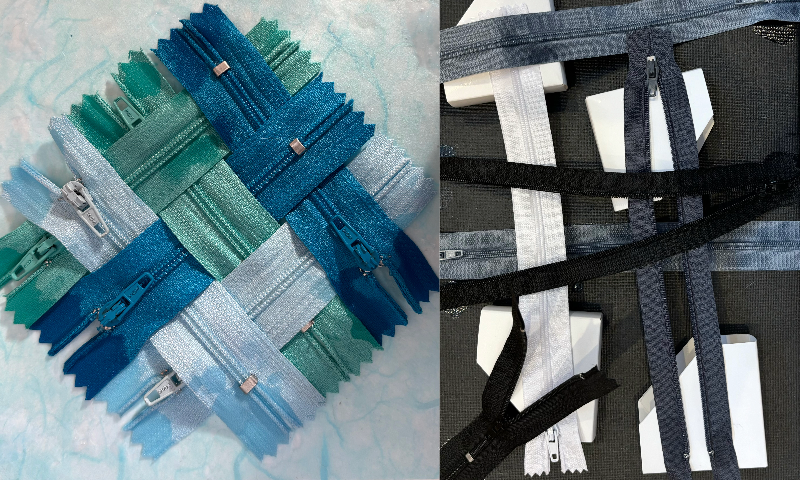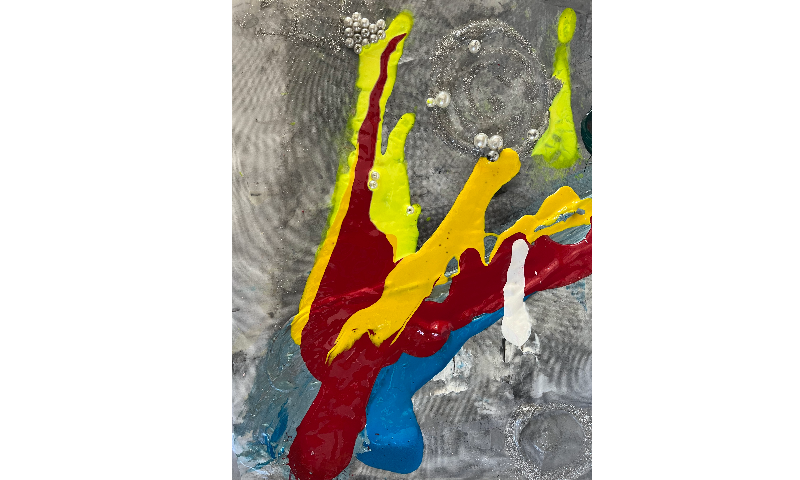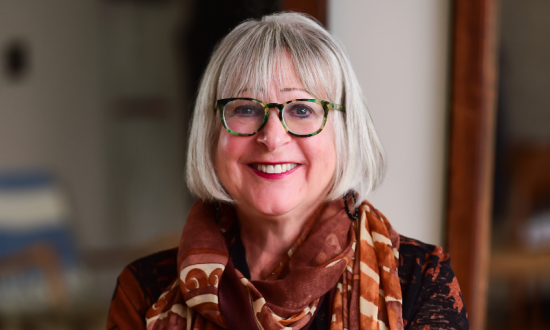Karen Gross is an educator, author and artist. She specializes in trauma and its impact on student success and psychosocial wellness across the PreK – adult pipeline. Her work is grounded in trauma theory, the in-the-trenches voices and experiences of students and educators, her own experiences teaching students and leading an institution as well as her personal experiences addressing trauma in work and personal settings. She uses her art to further her trauma work, including doing art as a way of ameliorating trauma symptomology. When not working, she enjoys family and friends, being in and on the water, playing pickleball, skiing and reading.
Recently, in an exclusive interview with K12 Digest, Karen shared her professional background, the first steps school-based personnel can take to better support students who have experienced trauma, the inspiration behind her highly acclaimed book series, ‘Lady Lucy Series’, the evolution and future of the K12 education landscape, future plans, pearls of wisdom, and much more. The following excerpts are taken from the interview.
Karen, please tell us about your background and areas of interest.
I have had what some might term an “episodic” career, largely moving within different quarters within the field of education (broadly defined). I was a student and substitute taught and was a teaching assistant while in college (grades 5 and 12, respectively and College level Spanish); I was a tenured law professor in NYC for two decades (specializing in insolvency, asset building in low-income communities and consumer finance); I became a college president in Vermont for eight years at a small, career-launching institution filled with first-generation college students; I served as a Senior Policy Advisor to the US Department of Education (Obama Administration); I currently write (adult and children’s) books, and teach and consult with school systems, colleges/universities and non-profit organizations on trauma and its impact on student/youth/adult success and psycho-social development; and I teach in the Continuing Education Division of the Rutgers School of Social Work (trauma certification program). In addition to trauma amelioration, my areas of interest include creativity, installation and participatory art initiatives and leadership (most particularly in troubled times).
How would you define trauma-informed teaching and how did this framework emerge?
Let me change the nomenclature if you don’t mind. I prefer the term “trauma responsive” teaching as it suggests action as opposed to being “informed about” or “sensitive to” trauma and traumatic events. Trauma-responsiveness is not a new concept and dates back to at least the Viet Nam era and the experiences of Veterans.
I would define trauma responsive pedagogy as teaching that enables educators to understand and respond to the experiences and symptomology of their students who have been traumatized and the accompanying awareness that trauma is affecting student learning and psycho-social development (as well as classroom engagement and management). As a precursor to providing trauma responsive pedagogy, educators need to be able to see/identify trauma and understand its impact on how we function (both our minds and our bodies). Then, these educators need to get a set of real usable strategies to ameliorate trauma symptomology, a tool box of skills to deploy in their classrooms and engagement with students.
In a world as complex and difficult as ours, often called a VUCA world in the business sector – volatile, uncertain, complex and ambiguous – trauma abounds. It is not a trendy thought or approach; it is an actual descriptor of the experiences of children, youth and adults of all ages, genders, races, ethnicities, religions and socioeconomic classes.
What are some important first steps school-based personnel can take to better support students who have experienced trauma?
I think the most important initial step is for educators to put on what I term “a trauma lens,” a perspective to seeing and naming what is occurring in the lives of their students within and outside of school. The best way to do this – and to see the import of this step – is to look at a book titled Poemotion by Takahiro Kurashima. (There are several volumes and it is easily acquired.)
Within the book, there are amazing drawings and a separate sheet of plastic paper, which when placed over the illustrations, makes them take different shapes and gives them added dimension and movement. For me, this act of seeing the illustrations with the plastic screen is what happens when we start to see the world from a trauma perspective. It looks, moves and feels differently.
Once one has a trauma perspective, it allows one to perceive students’ actions and inactions differently. And since trauma never goes away and does, sadly, get reactivated as we encounter new traumas, the trauma lens is an invaluable tool for promoting an understanding of and ways to engage with all of our students more effectively.

You are a best-selling author, writing books for both children (early-childhood through Grade 6) and adults. Moreover, your Lady Lucy Series is well-known and has been read by over 3000 children across the globe. What inspired you to write this book series and what is the most difficult part of your artistic process, if any?
Let me answer this excellent question in parts. I wrote the Lady Lucy series to inspire children to believe in the power of the possible. All of these stories are trauma-sensitive, recognizing issues with which children deal on a regular basis – discrimination, unsupportive families and communities, challenges, scary situations, friendships, relationships, and attachment/separation. Through problem solving and teamwork and creativity, Lady Lucy and her team take on situations and find pathways forward.
The inspiration for the series is a real woman named Lady Lucy Duff-Gordon who was a well-known fashion designer in the US and UK in in the late 19th and early 20th centuries and she was the first woman to advertise in a catalogue (the Sears Roebuck catalogue to be precise). She and her husband survived the Titanic catastrophe. She was sued and lost a legal case involving her agent and the famous judge, Benjamin Cardozo, presaged his decision against her with these acid and sarcastic laced opening words: “The defendant styles herself “a creator of fashions.” For years, I shared with students the actual story of Lady Lucy (about which I had written) to humanize her and better understand the court’s decision and distain. Lady Lucy was forgotten by history, and when I read my books to children, I often dress as she did, including wearing faux jewelry she had on the Titanic.
For me, writing and other creative art forms are not hurdles, and they are not fraught with difficulty. Generally, I do not struggle with creating stories or visual art. I attach some of my art here and I often engage with students in art projects keyed to the stories I am reading to them. For me, creativity is not a talent possessed only by some; we all have creativity housed in us; we just need to find it and tap into it.
What does literary success look like to you?
I have different definitions of success for my adult and children’s books, all of which have garnered remarkable attention and recognition. In terms of my children’s books, success is writing books students want to read again and again and again. There is an evergreen quality to the stories. In addition, success for me is enabling children to see themselves in the characters and experience feelings they might not have expressed before reading or hearing the books. And, for me, there is importance in children being read to and reading with adults as well as reading on their own. We forget to read with kids once they can read themselves by the by. Bottom line: Enjoying books is a gift we can bestow on children.
As to my adult books, I am completing a trilogy published by Teachers College Press at Columbia University. These three books (the newest of which is releasing in Summer 2024 and is co-authored with Dr. Ed Wang of Harvard Medical School) are designed to improve the lives of students – those who are traumatized. The new book has an added focus: demonstrating how a pandemic produced educational positives despite all the destruction it wrought. This third book in the trilogy, Mending Education, together with Trauma Doesn’t Stop at the School Door (2020) and Breakaway Learners (2017), are decidedly grounded on the experiences and voices of educators; the books are filled with strategies educators can actually use in classrooms. Success for me is the use of these strategies to enable educators to be their best selves for their students.

In your opinion, how has the K12 education landscape transformed over the last five years and where is it heading now?
Certainly, the Pandemic has transformed education. While most people think the changes have been negative (and there are most assuredly negatives like lower enrollment; lower test scores; increased student misbehavior; teacher exodus; delayed social and emotional growth; absenteeism; increased mental illness), I see positives and I have hope for the future of education if we are willing to see, understand, implement, replicate and scale many of the positives that occurred within education during the Pandemic. Yet, we do not see these positives and we discard them with regularity. In doing so, we fail to capture the hope and creativity that the Pandemic engendered.
We have seen the import of schools—yes schools — for starters; we have witnessed firsthand how schools do vastly more than provide content learning. For some students, they provide stability and continuity. For some students, they provide food and medical care. For some students, they provide role models that can stay with them into the future. A second positive is that we have seen how difficult it is to be an educator and the challenges they face daily. This has engendered a newfound respect for our educators and the work they need to do to enable our students to process. A third positive is that we have come to understand the lack of homogeneity among our students and the need to understand who they are and from whence they hail and how to enable them to feel safe and secure in a learning environment. These are just some of the positives I see if we can wear our trauma lenses.
If we fail to see the positives and then use them, we will be on an impossible quest to restore the status quo ante. But, we cannot actually go back to what was – it doesn’t exist and it wasn’t perfect back when. So, if we don’t use a crisis to create educational opportunity and advancement, I worry that change in education will remain perilously slow, students will struggle both academically and psych-socially and we will see a decline in educational enrollment and success – something that has lifelong individual and societal consequences.
How important are teacher- student relationships when it comes to students who have experienced trauma?
The simple answer is: VERY. Student-teacher relationships are key to student success. We know this for a variety of reasons. Students show that teacher departures lead to lower school achievement in students. We know trauma truncates neural pathways, which thankfully can be rebuilt due to our brain’s plasticity; that is why connect between students and teachers is so important. It restores what trauma takes away.
There are many many ways to build strong student-teacher relationships and surprisingly to many, a Pandemic can make this easier because there is shared experience. The data from Katrina involving therapy relationships demonstrate this.

How does the effect of trauma manifest differently for elementary, middle, and high school students?
I actually have written whole books and plentiful blog posts on this very question. Despite differences, behavior is the language of trauma. So, we see behavioral effects from trauma. Like child and adolescent development, these behaviors and their riskiness differ based on age (in addition to gender among other factors). Young children can hit; so can teenagers. But the intensity of the harm differs. Young students can shout and stomp and throw things; older students can do the same but with more force. Students of all ages can take risks with drugs and alcohol but the older the student, the more likely they will turn to substance abuse. And, the risk of suicide increases with age across the pre-K – 12 landscape although there are instances of suicide attempts (some unfortunately successful) among children. For children ages 5 –11, it is estimated that suicide is the 8th leading cause of death. Bottom line: the symptoms are similar across all ages but the manifestation of the symptoms is different.
How should teachers respond to a student with childhood traumatic stress if they are disruptive in the classroom?
This is a topic that I discuss at length with teachers, administrators and parents. Our first instincts are not right oft-times as we seek to separate the disruptive student from the classroom. We often do this because we want the other students to continue to learn and disruption by one student makes that hard. We punish badly behaving students by isolation, suspension and expulsion and a host of other negative actions. Some schools are even punishing by forcing online learning for misbehaving students.
Instead, we need to use a rehabilitation mindset, focusing on the why question: why did a student act disruptively? And we need to pay attention to the individual and provide support to that student as it is the behavior that was negative, not the person. I could go on and on about doing discipline differently, and there are many approaches but educators need to want to change how they deal with disruption. Some of the different approaches take time and training – well worth it in my view.
Let me just say this: consider behavior contracts BEFORE the fact. Ask students what should be done when another student (or they themselves) is/are disruptive. Encourage support not punishment; that is my suggestion and that does NOT mean a student “gets away” with everything. Far from it. The misbehaviors need to be understood and managed and addressed for sure; consequences yes but punishment is not the right approach in most instances.
Let me just add that if there is a risk of danger based on student behavior – risk to other students, the student themselves or to educators – then the approach differs. Separating violent students to prevent harm to others is sometimes the only viable approach in the immediate term.
Where do you see yourself in the next 5 years?
Another good question. I will still be writing and doing art. I have been asked (including by my co-author) if I will write another book. I think so. I suspect I have one more adult book in me and at least one more children’s book. And while this may sound terribly Quixotic, I hope to work even harder to improve the lives of those around me and enable others (and me) to become our best selves. I want to leave this earth better than I found it.
Are there insights or recommendations that you would share with school leaders who want to promote trauma-informed learning in a proactive way?
That’s a perfect last question because if I had to do the last four years again, I would spend more time helping school leaders and add leadership as a key focal point of my work. To date, I have largely focused on students and teachers/professors and families. I think that it is hard to lead generally and even harder in times of trauma. And I’ve personally done both. In fact, as I write this, I am preparing to do a program for school administrators in Boston, MA. It is true that some people are born leaders and there is no one style or approach to leadership. But we can help leaders become better and we need to do that – for their own sake and for the sake of those they serve. But this is only possible if leaders see the need to learn and grow and are not fully satisfied with the way things are now. Unfortunately, some leaders are either un-self-aware or so focused on tasks and problems at hand that they do not embrace change and growth. But since change and growth and problem solving are exactly what we want in our students, we should want this for our leaders too. And, we need to cultivate new leaders who are diverse so students can experience a wide range of role models.




